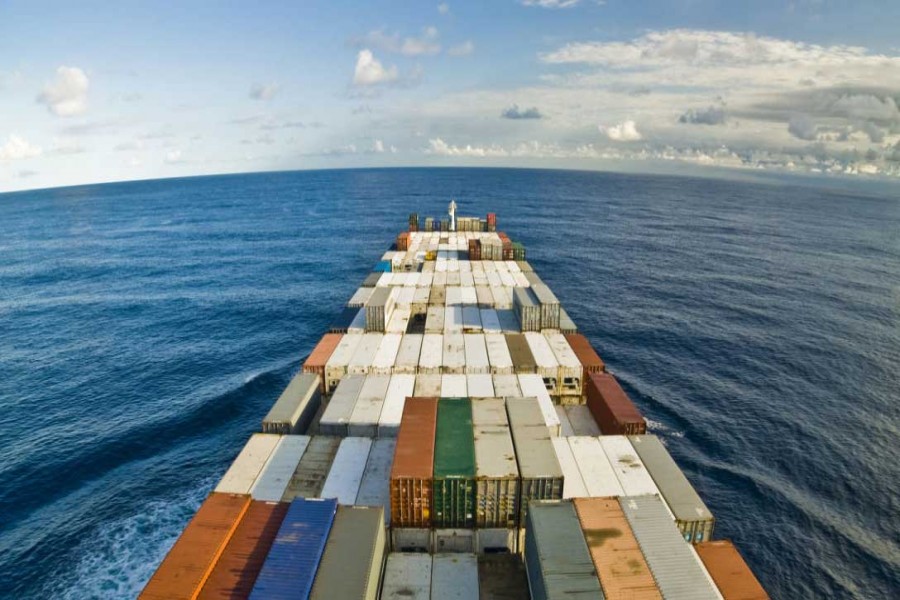
Rafiqul Islam and ASM Ahsan Habib
Published :
Updated :

Covid-19, caused by the deadly novel coronavirus, has been wreaking havoc across the world for the past few months. In addition to causing an unprecedented health emergency, it has stirred up an economic crisis almost equivalent to that of the Great Recession of 1930s.
Most countries have opted for social distancing as one of the measures to protect their population from the virus. People have been advised to stay at home or work from home to help maintain social distance. As a result, the availability of manpower has been reduced in every sector. Restriction imposed at land ports as well as lack of movement of cargoes by air has been taking a major toll on international trade. As a result, the situation in international trade has become unstable.

Meanwhile, the World Trade Organization (WTO) on April 8, 2020 in report made forecast on world trade. It said trade in 2020 will fall steeply in every region of the world and across all sectors of the economy. The WTO officials think that the decline this time is likely to exceed the trade slump brought on by the global financial crisis of 2008 09.
In fact, what kind of change can come in world trade?
Some surprising pieces of information have come out in the WTO report. The rate of decline of world trade is one of those. The WTO projects that the world trade will fall between 13.0 per cent and 32.0 per cent in 2020 due to the COVID - 19 pandemic.
They are also speculating that the COVID-19 pandemic will impede normal economic activity and life around the world. The WTO illustrates the current situation of the world trade through the Global Trade Model. It has chosen two scenarios, optimistic and pessimistic, to generate the trade forecast (Table-1).
In an optimistic scenario, the WTO economists see the volume of global merchandise trade going down by 13.0 per cent this year compared to 2019. However, in the pessimistic scenario, they observed that if the pandemic cannot be brought under control and the governments fail to implement and coordinate effective policy responses, the decline could be as high as 32.0 per cent or more.
The governments will have to make some policy decisions to minimise this downturn. They will have to respond to the crisis by initiating large- scale fiscal and monetary policy measures, raising expenditures in health care, giving income support to workers in affected sectors, providing liquidity support to companies, and making interventions in financial markets.
Trade and economic growth was already slowing in 2019 before spread of the virus across the world. World merchandise trade had registered a slight decline for the year by 0.1.0 per cent in volume terms after rising by 2.90 per cent in the previous year. Meanwhile, the value of world merchandise exports in 2019 in US dollar terms fell by 3.0 per cent to US$ 18.89 trillion.
Under both scenarios, imports from North America, South America and Central America and exports from North America and Asia will severely affected in 2020. All regions will suffer double-digit declines in exports and imports in 2020, except for "other regions" (which is comprised of Africa, Middle East and Commonwealth of Independent States (CIS) including associate and former member States). This relatively small estimated decline in exports stems from the fact that countries from these regions rely heavily on exports of energy products, demand for which remains relatively unaffected by fluctuating prices. If the pandemic is brought under control and trade starts to expand again, most regions could record double-digit rebounds in 2021. The outcomes for both 2020 and 2021could be above or below these outcomes due to the extent of high uncertainty. Therefore, like other countries in the world, the import and export of Bangladesh will be severely affected.
The report also mentions that a 2021 recovery in trade is expected, but dependent on the duration of the outbreak and the effectiveness of the policy responses. It also adds that trade will likely fall steeper in sectors with complex value chains, particularly electronics and automotive products. Moreover, services trade may be most directly affected by COVID-19 through transport and travel restrictions.
WTO economists say that two factors will determine the strength of the recovery. Firstly, how fast the pandemic is brought under control and, secondly, the kind of policies the governments choose to pursue in dealing with the crisis. They feel that economies would recover faster if markets are open to international trade and investment. Thus, if the export-oriented manufacturing sector, banks and financial institutions and government policies can be properly coordinated, it will be possible to deal with even an adverse trade situation. Besides, if countries work together, it will be possible to make a fast recovery.
Rafiqul Islam is the Deputy Managing Director of Shimanto Bank and ASM. Ahsan Habib, Principal Officer of Uttara Bank Ltd.


 For all latest news, follow The Financial Express Google News channel.
For all latest news, follow The Financial Express Google News channel.